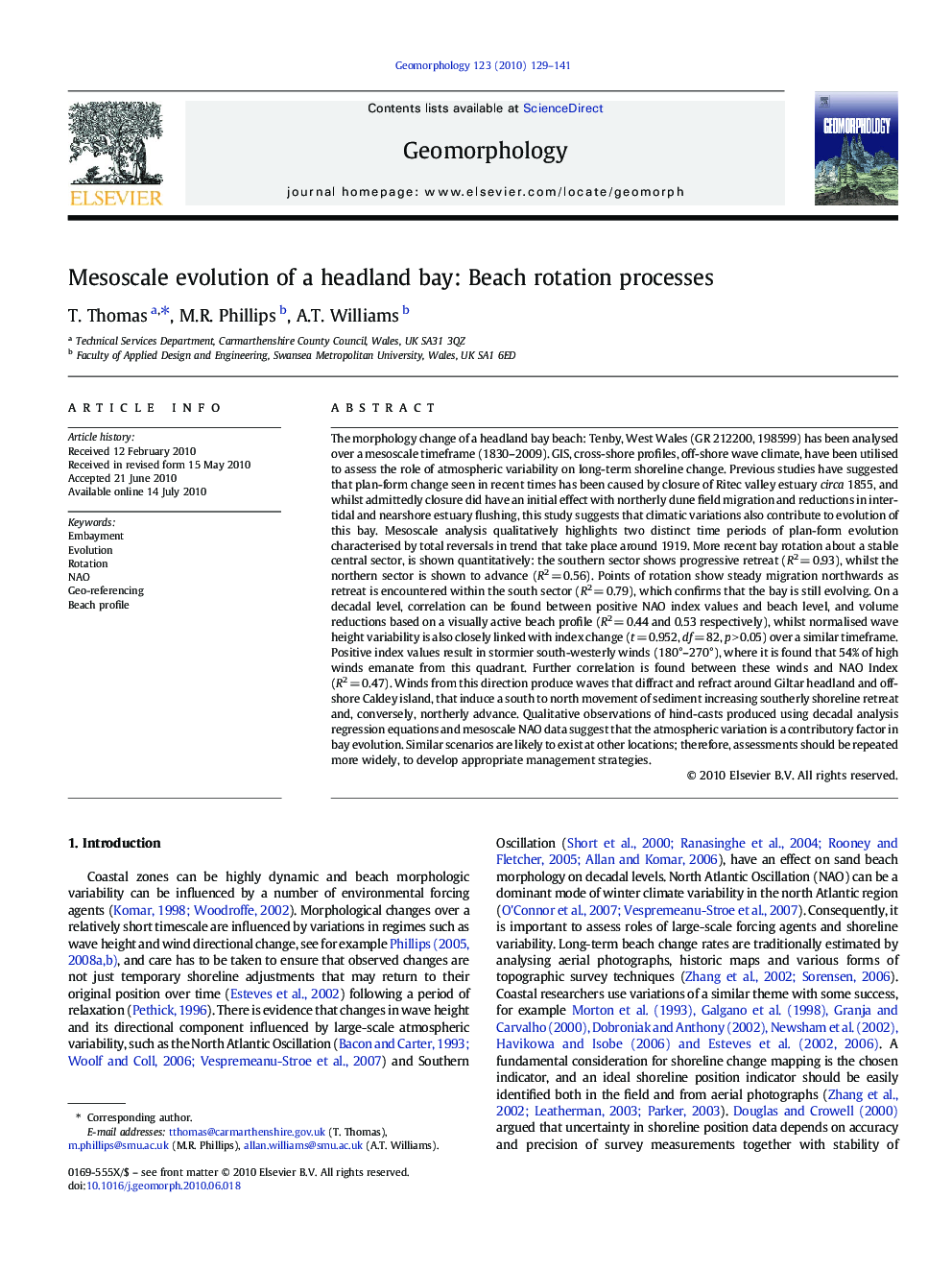| کد مقاله | کد نشریه | سال انتشار | مقاله انگلیسی | نسخه تمام متن |
|---|---|---|---|---|
| 4685850 | 1635513 | 2010 | 13 صفحه PDF | دانلود رایگان |

The morphology change of a headland bay beach: Tenby, West Wales (GR 212200, 198599) has been analysed over a mesoscale timeframe (1830–2009). GIS, cross-shore profiles, off-shore wave climate, have been utilised to assess the role of atmospheric variability on long-term shoreline change. Previous studies have suggested that plan-form change seen in recent times has been caused by closure of Ritec valley estuary circa 1855, and whilst admittedly closure did have an initial effect with northerly dune field migration and reductions in inter-tidal and nearshore estuary flushing, this study suggests that climatic variations also contribute to evolution of this bay. Mesoscale analysis qualitatively highlights two distinct time periods of plan-form evolution characterised by total reversals in trend that take place around 1919. More recent bay rotation about a stable central sector, is shown quantitatively: the southern sector shows progressive retreat (R2 = 0.93), whilst the northern sector is shown to advance (R2 = 0.56). Points of rotation show steady migration northwards as retreat is encountered within the south sector (R2 = 0.79), which confirms that the bay is still evolving. On a decadal level, correlation can be found between positive NAO index values and beach level, and volume reductions based on a visually active beach profile (R2 = 0.44 and 0.53 respectively), whilst normalised wave height variability is also closely linked with index change (t = 0.952, df = 82, p > 0.05) over a similar timeframe. Positive index values result in stormier south-westerly winds (180°–270°), where it is found that 54% of high winds emanate from this quadrant. Further correlation is found between these winds and NAO Index (R2 = 0.47). Winds from this direction produce waves that diffract and refract around Giltar headland and off-shore Caldey island, that induce a south to north movement of sediment increasing southerly shoreline retreat and, conversely, northerly advance. Qualitative observations of hind-casts produced using decadal analysis regression equations and mesoscale NAO data suggest that the atmospheric variation is a contributory factor in bay evolution. Similar scenarios are likely to exist at other locations; therefore, assessments should be repeated more widely, to develop appropriate management strategies.
Journal: Geomorphology - Volume 123, Issues 1–2, 1 November 2010, Pages 129–141